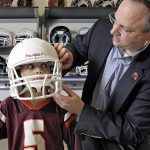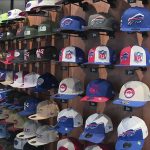Columbia Sportswear seems to be suffering from the macro trend that is pushing sales away from the middle market in the U.S. The company reported declining sales in both outerwear and footwear in the domestic market, while Europe and Canada both showed increases. Even though roughly 40% of Columbias business is international, the soft market in the U.S. eroded gross margins and the companys bottom line suffered.
A second strong-point for Columbia domestically, other than MTH, was its strong growth in Sportswear in the U.S. as well as “value oriented” fleece. U.S. outerwear sales were said to be “down significantly” due to an expected down-turn in youth product sales, and an unexpected decline in adult sales. Footwear sales were also soft during the third quarter due to weather issues. Columbias spring order book is showing continued strength in sportswear, while footwear orders are flat due to heavier competition from “upper echelon” brands that have come down-market.
The Canadian market remains strong for Columbia, primarily due to exchange rate fluctuations. However, sales were up across all categories with particular strength in sportswear.
Sales in Europe during the third quarter were up 5.6% due to strong footwear product shipments which were partially offset by slow outerwear sales. Boyle said that the company continues to see strength in Spain and is making progress in the U.K. but sees continued challenges in Germany, Austria, and the Netherlands due to a soft economic environment. Spring bookings of lightweight outerwear increased to historical levels, while spring apparel orders were “healthy,” and footwear orders “slowed considerably.”
Other International sales were up in the double digits due to strength in Japan and various international distributors. Japan reported an 18.5% sales increase and accounted for more than 20% of the Other International sales number.
Mountain Hardwear continues to perform well for Columbia, with a 30.1% sales increase during the quarter to $23.8 million. Tim Boyle, chairman and CEO of Columbia Sportswear, said that the increase was due to increased sales to MTHs existing specialty retail base and expansion of international distribution. While much of MTHs growth was spurred by international sales, the company still saw strong double-digit growth in the U.S. In an effort to increase Mountain Hardwears presence and presentation at retail, the company has been creating “brand shops” within existing retailers and has established over 100 doors over the past two years.
The 120 basis point decline in gross margin was primarily due to a shift in product mix and some “isolated supply chain issues” involving a suppliers late deliveries and related air-freight charges. Columbia also sees product costs increasing as oil-based material prices increase. SG&A expense increased slightly because of additional personnel costs and increased depreciation related to the new Kentucky distribution center.
Looking ahead, Columbia management expects fourth quarter sales to increase roughly 1% and net income to decline 18% to 21%. This will cause fiscal 2005 sales to increase 5% and income to decline 9% to 10%. The company also estimated that sales for Q1 2006 will increase roughly 4% based on pre-season bookings, with flat gross margins and income declining approximately 17% for the period.
| Columbia Sportswear | |||
| Third Quarter Results | |||
| (in $ millions) | 2005 | 2004 | Change* |
| Total Sales | $409.8 | $415.8 | -1.4% |
| U.S. Sales | $244.9 | $264.5 | -7.4% |
| Canada Sales | $52.6 | $49.5 | +6.3% |
| Europe Sales | $62.1 | $58.8 | +5.6% |
| Other Intl | $50.2 | $43.1 | +16.5% |
| Outerwear | $201.4 | $224.3 | -10.2% |
| Sportswear | $125.7 | $108.4 | +16.0% |
| Footwear | $63.8 | $62.7 | +1.8% |
| Accessories | $17.1 | $18.6 | -8.1% |
| Equipment | $1.8 | $1.7 | +5.9% |
| Gross Margin | 46.0% | 47.2% | -130 bps |
| Net Income | $66.5 | $68.6 | -3.1% |
| Diluted EPS | $1.74 | $1.68 | +3.6% |
| Inventories | $223.0 | $194.4 | +14.7% |










